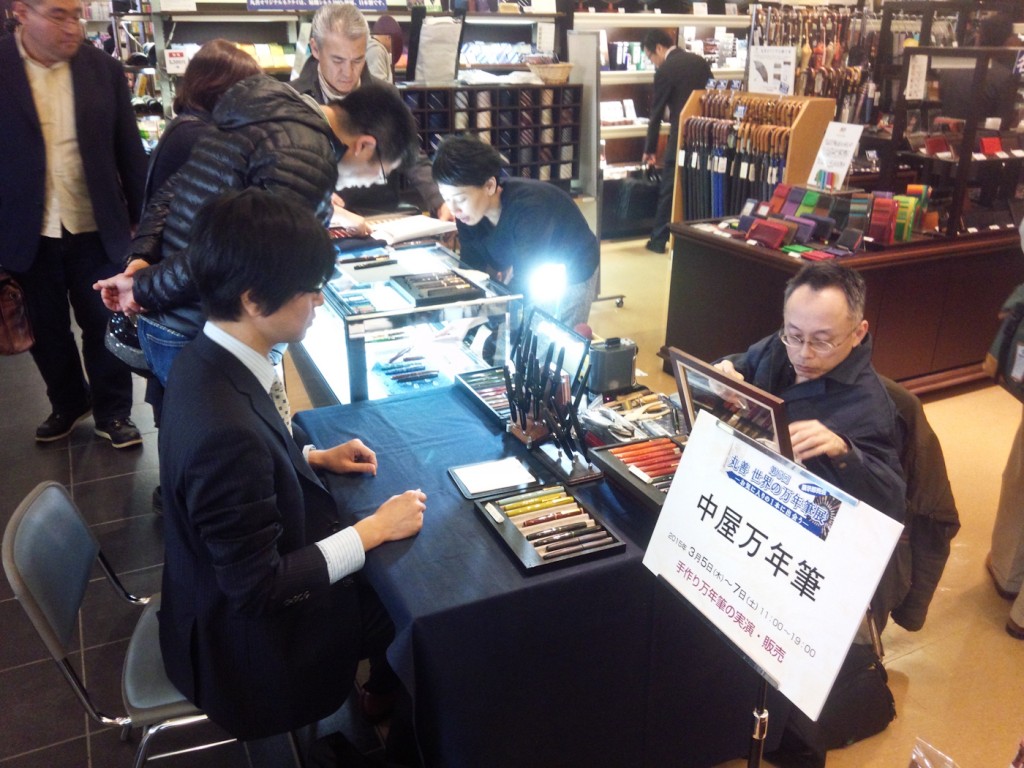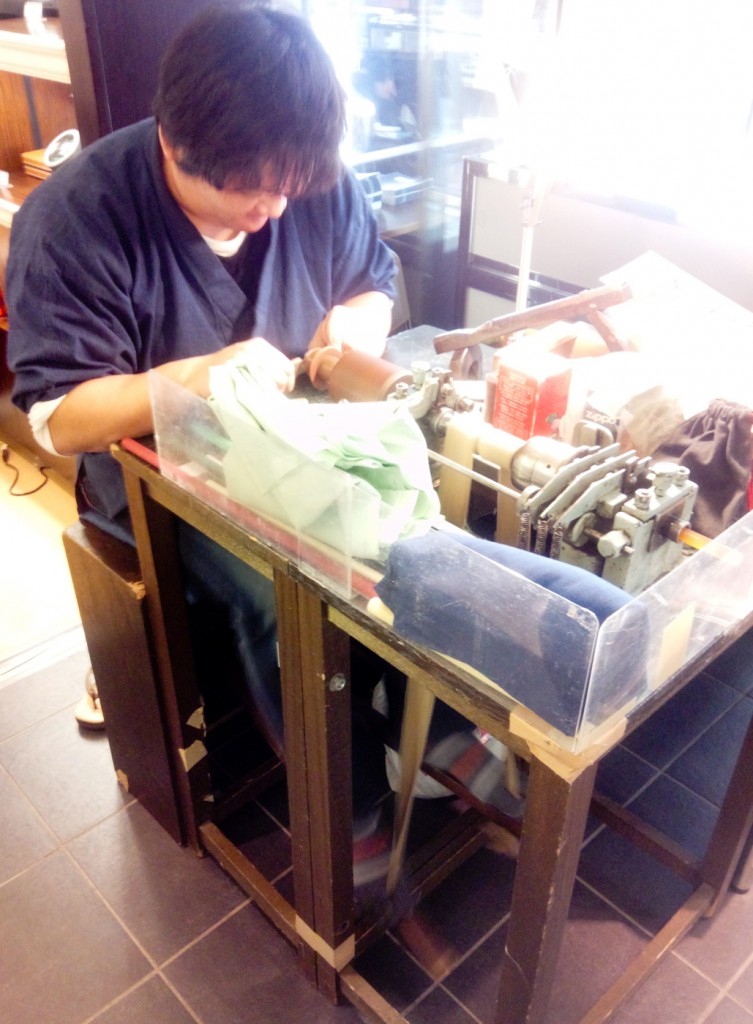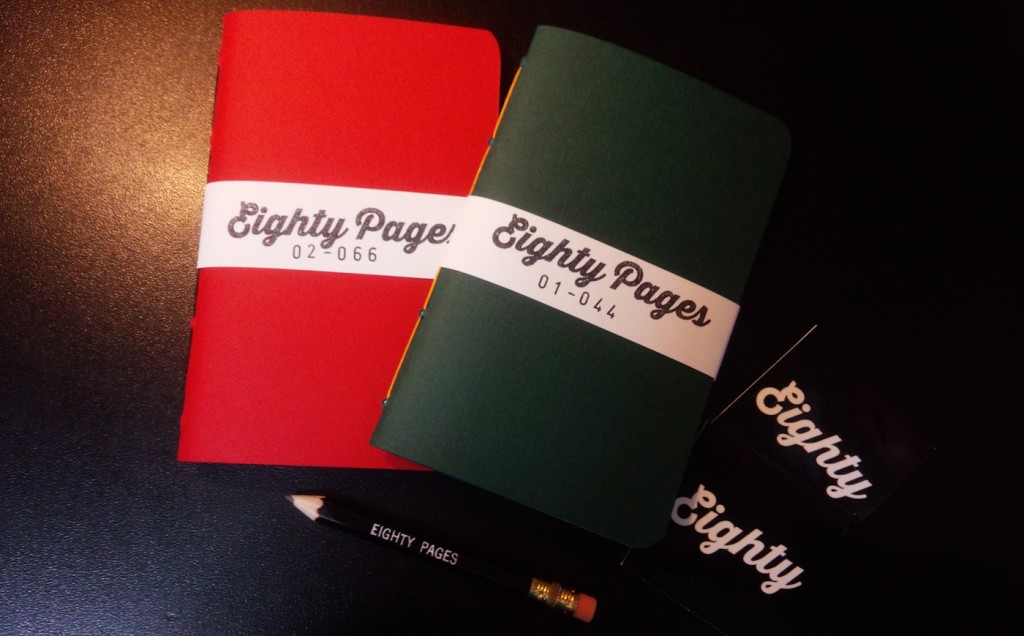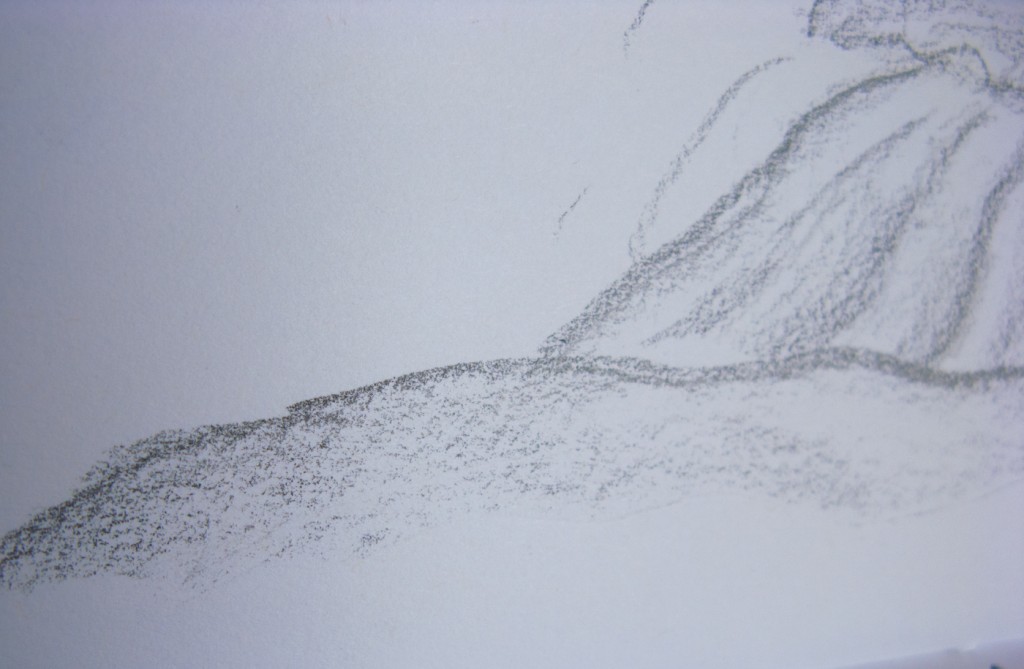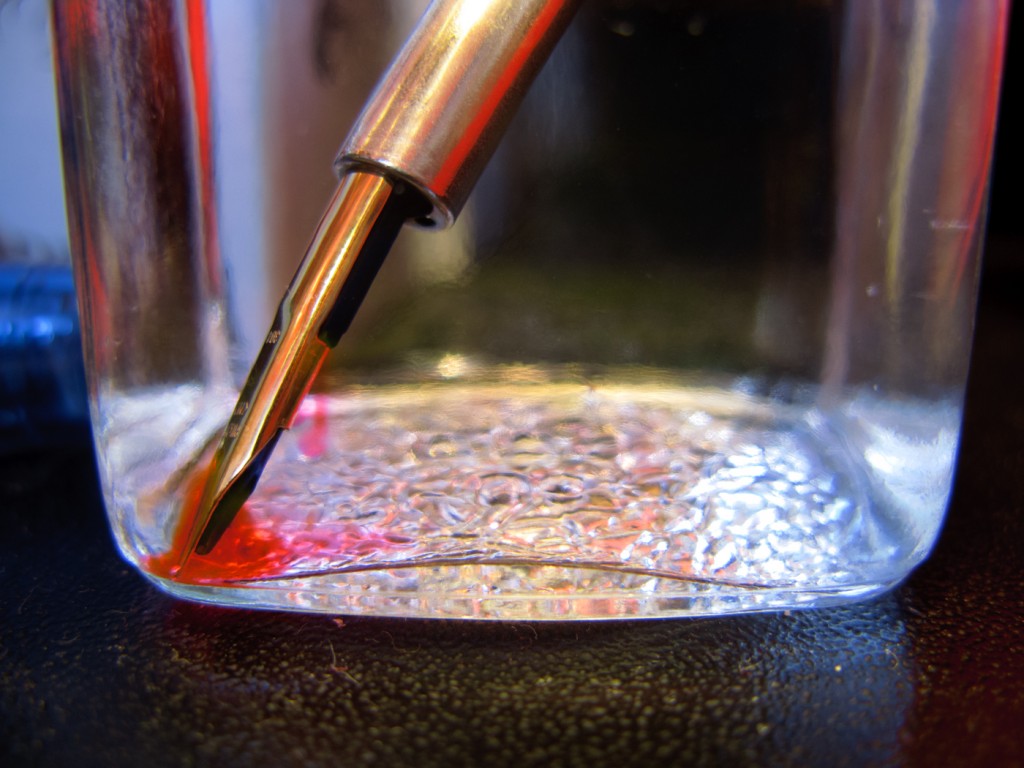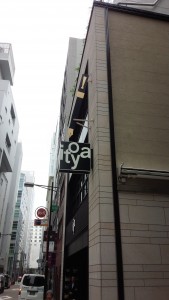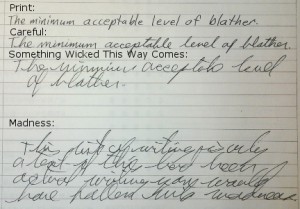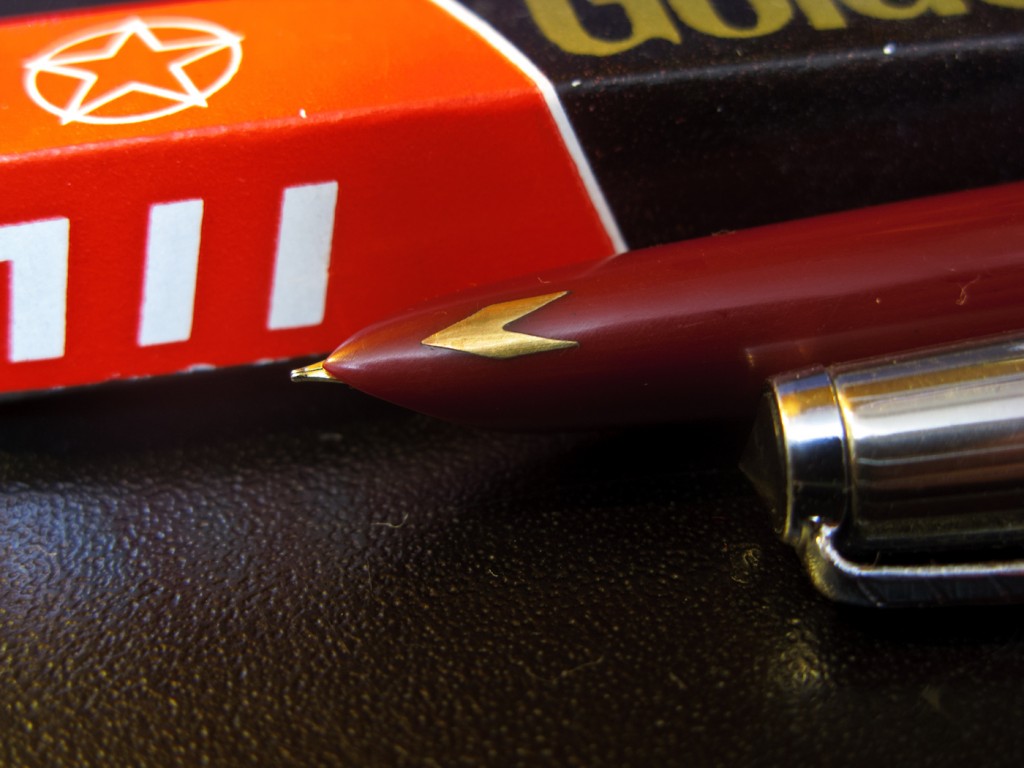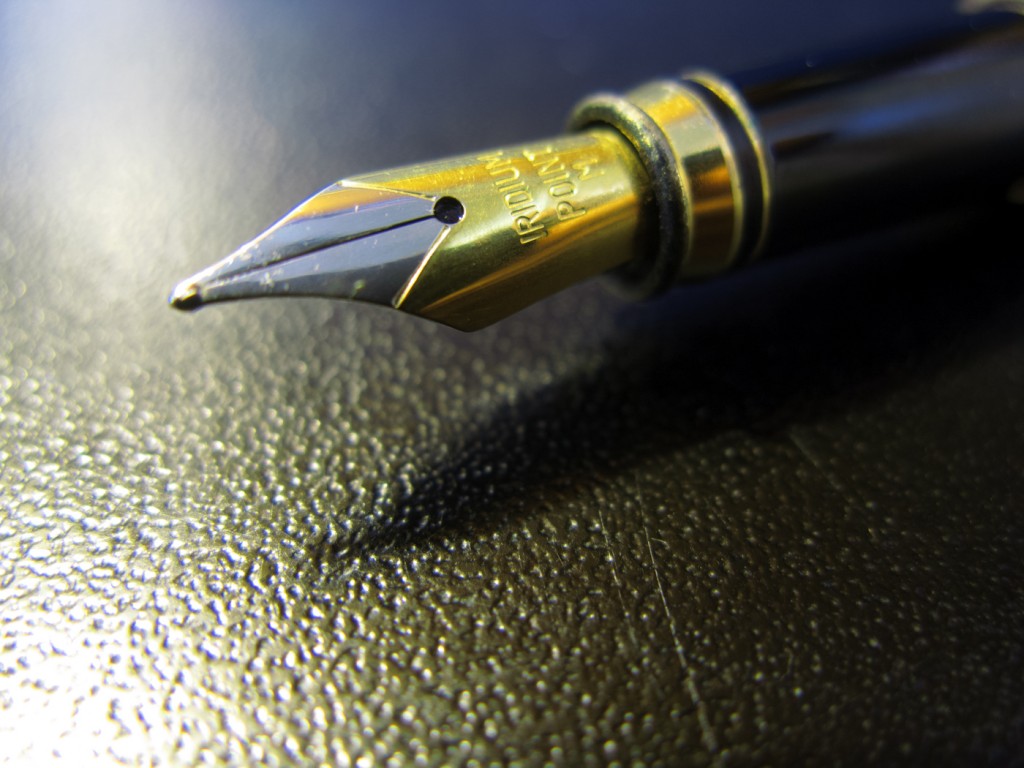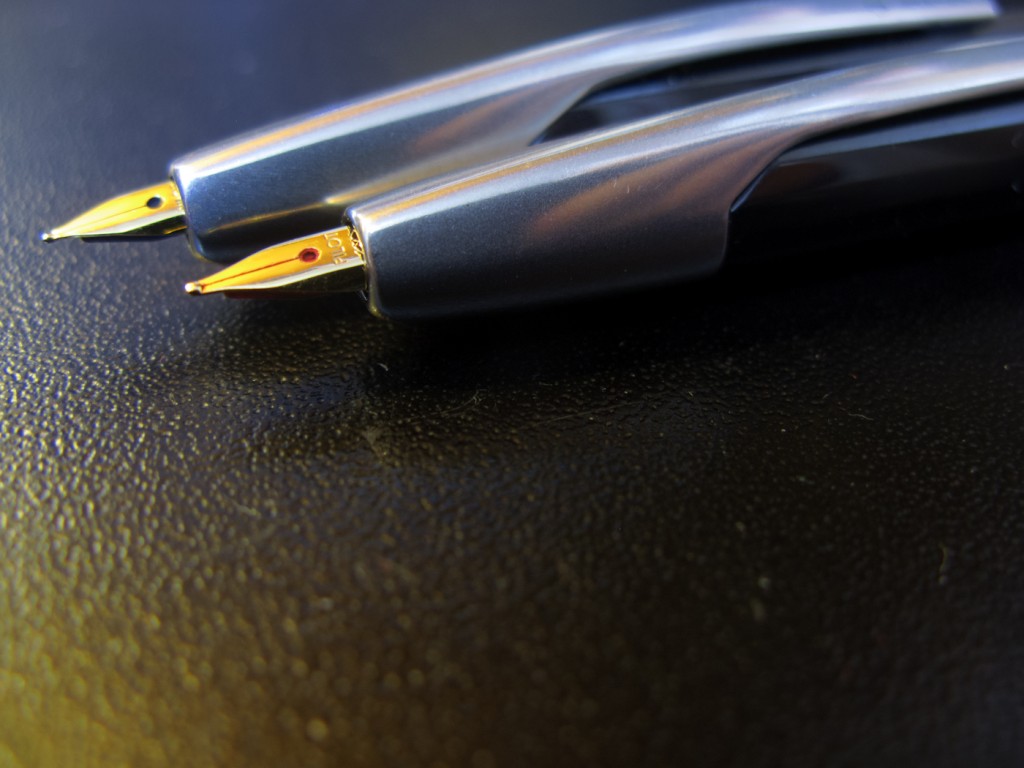I only reached for my credit card twice but I ended up not buying anything.
Well, maybe it was three times.
Today was the 6th World Fountain Pen Fair at Maruzen Books in downtown Tokyo. After work, I rushed down to Tokyo, cameras in hand, hoping to get some useful material for this site. When I arrived at Maruzen, I was surprised to see the fair was taking place in the basement.
When I got to the basement, the first thing I did was look for the Nakaya table. (Note, For those who don’t love fountain pens and therefore have no soul: Nakaya pens are one of the Holy Grails of fountain pens.) (Second Note: in this case “Holy Grail” is Japanese for “Really F@#king Expensive Pen”). They are sought after because they are handmade by experienced artisans and manage to be both simple and beautiful.
Unfortunately, Nakaya didn’t seem to be anywhere in the basement. Instead I looked around at famous production pens like Pelikan and, oddly, Platinum, which is the company Nakaya split from. The entire fair could have been mistaken for simply another department in the store as there was nothing special about it. While I was there, I tried out a Pelikan Souveran 800 and started reaching for my credit card. I do not claim this was a sane act but I did it. Luckily, I remembered I was looking for Nakaya pens so put my credit card back.
I then went to the 3rd floor to check out a rare and antique books section and found a new must-have item for work: a fake dictionary that houses a bottle of whiskey and a shot glass.
On the way back downstairs, I suddenly stumbled across the Nakaya table, which was set up practically in the foyer next to umbrellas. It was a terrible location where casual shoppers met pen addicts in a small traffic jam.
Today was especially interesting for Nakaya fans because Mr. Shinichi Yoshida, the nibmeister for Nakaya, was at the table adjusting nibs for newly purchased pens. The cheapest pen I saw that I liked was just over 59,000 yen or 491 US dollars. Oddly, this is a decent price for a Nakaya with a nib modified by Mr. Yoshida so I started to reach for my credit card. I then realized that I was like the 10th person in line hoping to even get in line so I put my credit card back.
Right next to the Nakaya table was the Ohashi-do table. Ohashi-do is a Sendai based fountain pen maker who also makes everything by hand. Or, maybe, by foot.
I neglected to write down the name of the artisan, but he was busy working a foot-powered lathe to make a pen and I didn’t want to interrupt him. The line for the table was short and I started to reach for my credit card, but I was more interested in watching the man with no name work.
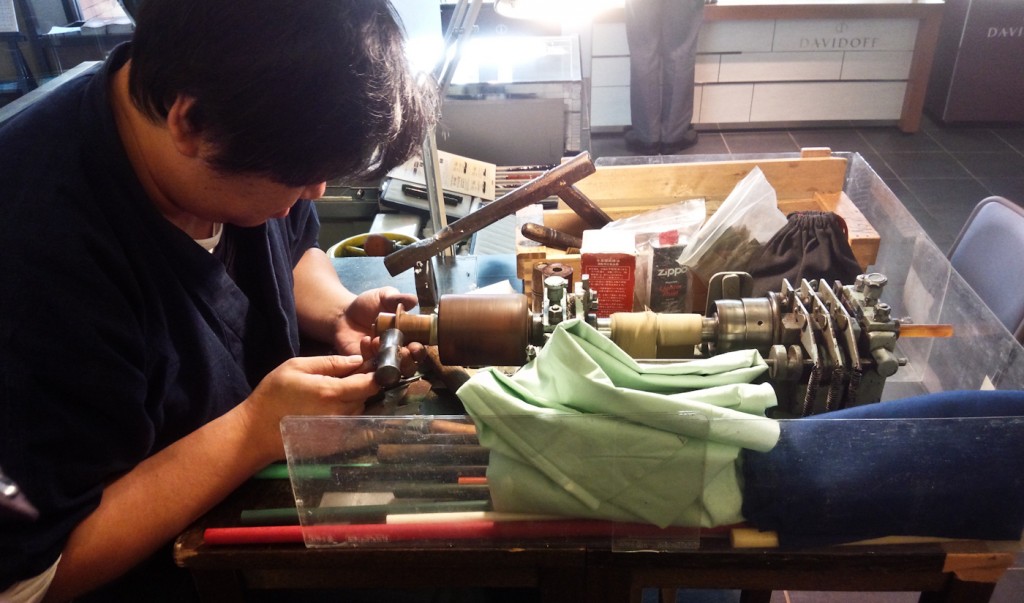
The man with no name adjusts the lathe with a small mallet. You can see how long the orange acrylic rod is.
All in all, I find that Japanese pen shows are lacking in energy. The Nakaya and Ohashi-do tables were fun, but the rest was boring clerks in suits. I’ll go to the 16th Mitsukoshi Fountain Pen Festival next week. I hope it’s more fun.
I probably better leave my credit cards at home before I go. I don’t know if I can survive temptation twice.

